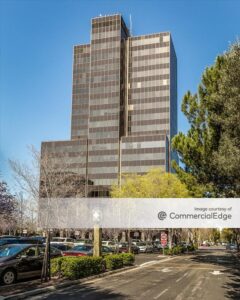Tackling California’s Seismic Retrofit Mandates
Commercial building owners in California face many challenges in today’s volatile market, including looming deadlines to comply with city ordinances mandating seismic retrofits of specific building types.
Non-ductile concrete structures, numbering over 40,000 across the state, are highly vulnerable to seismic events, and retrofits can cost owners millions if not tens of millions of dollars. With billions of dollars of economic impact at stake, owners need to know that there are strategies available that may help to reduce costs.
A new generation of seismic ordinances has sprung up across California in response to poor performance by certain building types during previous earthquakes, such as the 1989 Loma Prieta earthquake and the 1994 Northridge earthquake.
Ordinances typically outline minimum requirements for mandatory evaluation and structural improvements intended to minimize earthquake-induced damage and enhance safety for building occupants. Some ordinances enacted by cities in the Los Angeles metro region including Beverly Hills, Los Angeles, Santa Monica, and West Hollywood, outline set timelines and feature deadlines for building assessment, tenant notification, and retrofit, specifying stiff penalties for non-compliance.
Vulnerable building types identified by these ordinances include wood-frame soft-story structures, masonry wall buildings, and reinforced concrete and non-ductile concrete structures.
Non-ductile concrete
Non-ductile concrete buildings built before modern seismic codes established in the mid-1970s present significant life safety and resilience risks in the event of an earthquake because they are inflexible or brittle due to a lack of reinforcing steel. Failure of these buildings has caused catastrophic damage during significant earthquakes across the world over the last 15 years including those centered in California.
It was very common for nonductile concrete buildings to be constructed in high-risk seismic areas pre-1980s, with current estimates suggesting that over 40,000 of these buildings still exist in California with approximately 1,700 of them in Beverly Hills, Los Angeles, Santa Monica and West Hollywood.
The Santa Monica ordinance, for example, applies to existing reinforced concrete buildings constructed under building code standards enacted before Jan. 11, 1977. In 2017, orders were served to the owners of roughly 70 suspected brittle concrete buildings, providing three years to submit a building assessment and ten years for a seismic retrofit to be completed.
Building owners have options to reduce costs
Retrofitting an existing building, like any significant renovation project, is typically involved, disruptive and very expensive for building owners. Most of these buildings are occupied, which adds more complexity to retrofit implementation and escalates the opportunity for lost rent, cost to relocate tenants, or lengthy construction durations.
Structural building analysis is the first step in the retrofitting process, giving owners critical information on what needs to change and to what extent, which can help drive decisions regarding potential solutions, budget, and timeline. Structural analysis aims to determine how a building will respond to seismic activity and at what point building material is non-elastic, unable to return to its original shape following an earthquake.
Static analysis is the most common way buildings are assessed. This method attempts to approximate the dynamic effects of seismic ground motions using a static procedure. While this approach will provide sufficient retrofit solutions in some cases, the generalized nature of the data inputs and estimates is not precise and can result in either excessive interventions that carry significant cost impacts or misplaced interventions where true vulnerabilities are left unaddressed.
Nonlinear response history analysis is a highly specialized technology developed in the last 20 years. This approach leverages exceptionally detailed modeling of a specific building and its various components to more accurately estimate building performance in the event of an earthquake. Compared with other methods, the level of approximation is greatly reduced as construction materials such as rebar and concrete are modeled along with their specific locations and adjacencies. A custom model is created with this information and an earthquake simulation is conducted to observe the response of each element under dynamic earthquake conditions noting which components actually fail.
In addition to expertise with this advanced technology, nonlinear response history analysis requires a tremendous amount of engineering knowledge to appropriately interpret a building’s drawings and create an accurate model. Detailed modeling, custom simulation, and required third-party peer review make nonlinear response history analysis more time-consuming than static analysis and the upfront engineering fees are higher. However, the proposed intervention strategy is often much more cost-effective and less disruptive to building occupancy than the static approach.
Clear communication between the design team and the owner is imperative to ensure that both the benefits and potential risks of the nonlinear response history process are understood. While engineering can appear to be black and white to those outside the industry, nonlinear response history analysis involves making decisions based on risk probabilities and is therefore less straightforward and prescriptive. Explaining the probabilistic results to building owners and determining the right retrofit approach for their specific needs is critical to the overall success of this approach.
A case study in Santa Monica
A six-story nonductile concrete office building in Santa Monica, Calif., 3130 Wilshire Blvd., was built in 1968 and is owned by The Swig Company. The initial assessment of this building was submitted promptly to local authorities, confirming a seismic retrofit would be required. A static analysis of the property was completed. However, the suggested intervention was costly and cumbersome, dramatically affected leasable square footage, and obstructed windows.
Based on previous experience with the structural engineering firm Tipping, Swig ordered a nonlinear response history analysis to be conducted hoping that a less disruptive solution could be devised at a lower cost. The analysis revealed specific vulnerabilities in the building structure and, with a clearer and more detailed understanding of how this particular building might respond to a seismic event, a greatly streamlined and less invasive solution was envisioned utilizing buckling restrained braces at the ground floor level.
Other interventions included new concrete shear walls in the basement and shear strengthening of some existing columns and beams. The project team, which also included architect Gensler and the owner’s representative Project Management Advisors, worked collaboratively to place the retrofit in the least visually consequential locations and to minimize impacts on the mechanical systems and parking. The effective use of nonlinear response history analysis, in this case, yielded a retrofit design that was significantly more cost-effective than the solution proposed by the static analysis and also lessened the impact on existing occupants.
Selecting the best option
The benefit of a nonlinear response history method can be significant for existing structures with non-conventional archaic seismic systems, particularly buildings that are taller than three stories or that have shallow foundations and a mixture of types of lateral force-resisting elements. In these cases, an experienced team can precisely model the existing elements to understand what strengths and vulnerabilities are present and develop a targeted intervention that minimizes impacts on leasable space and, often, reduces construction costs.
The more sophisticated investigation provided by nonlinear response history analysis results in higher upfront costs, a reality that deters some owners from employing the approach. However, it’s important to acknowledge that these costs are often, as in the case of 3130 Wilshire Blvd., an order of magnitude less than the amount of money saved by the more precise retrofit solution and the additional ancillary savings due to reduced tenant disruption.
Owners of nonductile concrete buildings in greater Los Angeles have options for the structural analysis of their buildings. While static analysis may be sufficient in some instances, considering whether specific building circumstances are better served by the more in-depth nonlinear response history analysis can prove to be the better investment.
David Williams, SE, is senior project manager with Project Management Advisors. Jason Armes, SE, is associate and Michael J. Korolyk, SE, is Principal with Tipping Structural.
The post Tackling California’s Seismic Retrofit Mandates appeared first on Commercial Property Executive.



